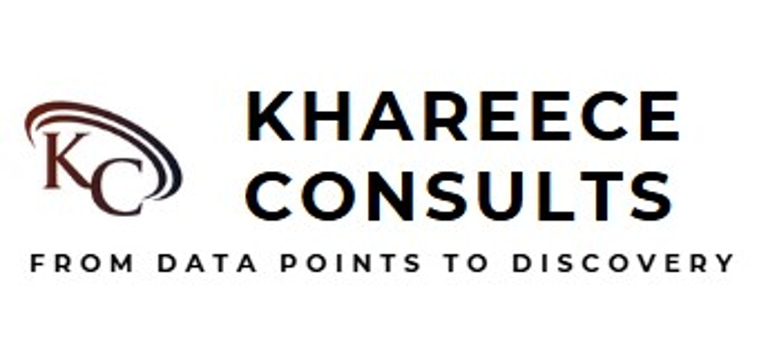Unlocking Insights: How to Develop an Effective Research Questionnaire
When carrying out your research, a well-designed questionnaire is not merely a compilation of questions; it serves as a channel for valuable insights and significant data. Regardless of whether you are conducting qualitative, quantitative or mixed research, for you to realize the objectives of your study, it is essential to develop an instrument or tool that collects actionable and dependable data.
Isaac Senda PMP®
1/6/20253 min read



Introduction
Khareece Consults has provided assistance to numerous research students throughout the reseach process, however the data collection, analysis and report writing process stand out. We have consistently noted that inadequately prepared instruments can result in complications during data collection, which could have been prevented with appropriate planning. A questionnaire that is well-designed not only guarantees that the data collected is valid, reliable and consistent with the research questions, objectives, and overall study topic, but also facilitates a more efficient data collection process.
Your data collection instrument is a key foundation of your research, especially after you have completed your proposal writing, and dedicating time to its development can prevent you from encountering unnecessary obstacles and setbacks. Here is are key considerations for developing a questionnaire that is both accurate and actionable.
1. Define Your Research Objectives
Begin by identifying the objectives of your investigation. Are you conducting research on trends, evaluating satisfaction, or comprehending behaviors? Formulating questions that are directly pertinent to your research requires a well-defined objective. Your questionnaire will be built upon a solid foundation of clear objectives, guaranteeing that each question is consistent with your objectives. Therefore, its is crucial to have well defined and developed objectives for your study that feed into the gap you intend to fill.
2. Select the Right Question Types
Choose question formats that suit your research objectives:
Open-ended questions: Open-ended questions are inquiries that enable respondents to respond in their own terms, without being limited to predetermined options. These questions stimulate detailed, descriptive responses, which result in more qualitative data that conveys the depth and richness of participants' thoughts, emotions, and experiences. For example:
Ø What technical capacities and skills do you believe exist among public health staff to implement and manage AI tools?
Ø In your view, how can AI enhance program efficiency and decision-making in public health?
Closed-ended questions: Closed-ended questions are inquiries that offer respondents a predetermined set of answers to select from, such as "yes/no," multiple-choice, or Likert scales. The quantitative analysis of data is facilitated by the structured nature of these questions, which restrict responses to only what is provided. For example:
Ø How would you rate your technical capacity and team to use and manage AI tools?
Excellent Good Fair Poor Very poor
Ø Have there been any AI-related pilot projects in your organization?
Yes No Not sure
3. Keep It Simple and Focused
· Do away with complex jargon or long questions that might confuse respondents. Aim for clarity and shortness, ensuring that each question focuses on a single idea. This approach minimizes misinterpretation and enhances the quality of responses.
4. Avoid Common Mistakes
From our experience, we’ve seen tools that include:
Overly broad questions that fail to yield actionable insights.
Leading or biased questions that skew results.
Ambiguous language that confuses respondents.
Make sure that your Questions are clear and neutral in your wording to avoid these pitfalls, and for you to achieve this, you will need time to review and test your tool
5. Structure for Success
Organize questions that are related into sections to establish a logical progression. Begin by asking general queries to establish a rapport, and then progress to more specific or sensitive subjects. A tool that is well-organized maintains the attention of respondents and minimizes the number of dropouts.
6. Seek Expert Opinion
To improve the quality, accuracy, and relevance of a tool, reach out to individuals with extensive experience or specialized knowledge in a particular field to review your tool. Experts offer critical perspectives and provide valuable insights that enhance the validity and reliability of your tool.
5. Pilot Your Questionnaire
It is crucial to conduct a small, representative group test of your instrument prior to its comprehensive deployment. This phase assists in the identification of technical issues, gaps that require adjustment, or unclear concerns. Further refine the instrument by incorporating feedback.
6. Align with Ethical Standards
Every questionnaire should include:
A clear explanation of the study’s purpose.
Assurance of respondent confidentiality.
An informed consent section.
These elements not only comply with research ethics but also build trust with participants.
7. Post-Collection Review and Reflection
After the process of data collection, analyze the data and assess the questionnaire's efficacy after data collection is finalized. Identify the lessons that can be applied to improve your research process and improve future tools.
Conclusion
Your data collection tool plays a pivotal role in ensuring that your research answers the right questions and achieves its objectives. By carefully planning and designing your questionnaire, you can avoid common pitfalls and collect data that truly supports your study.
